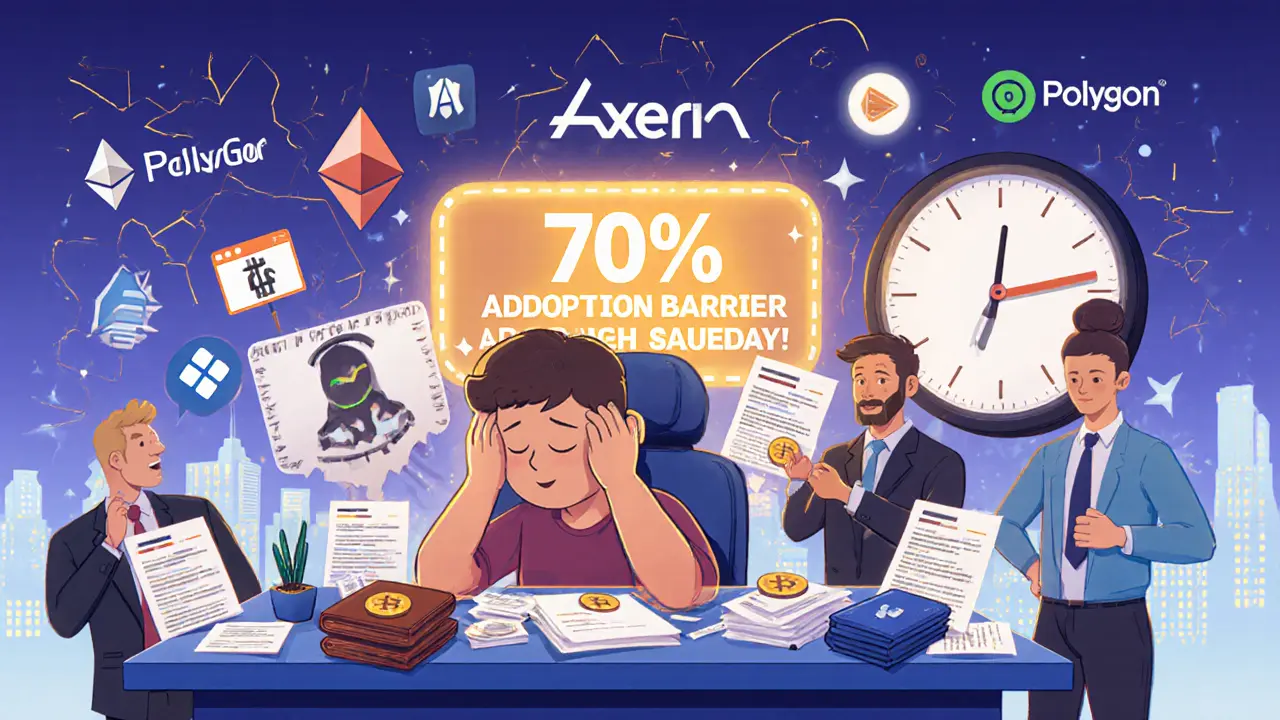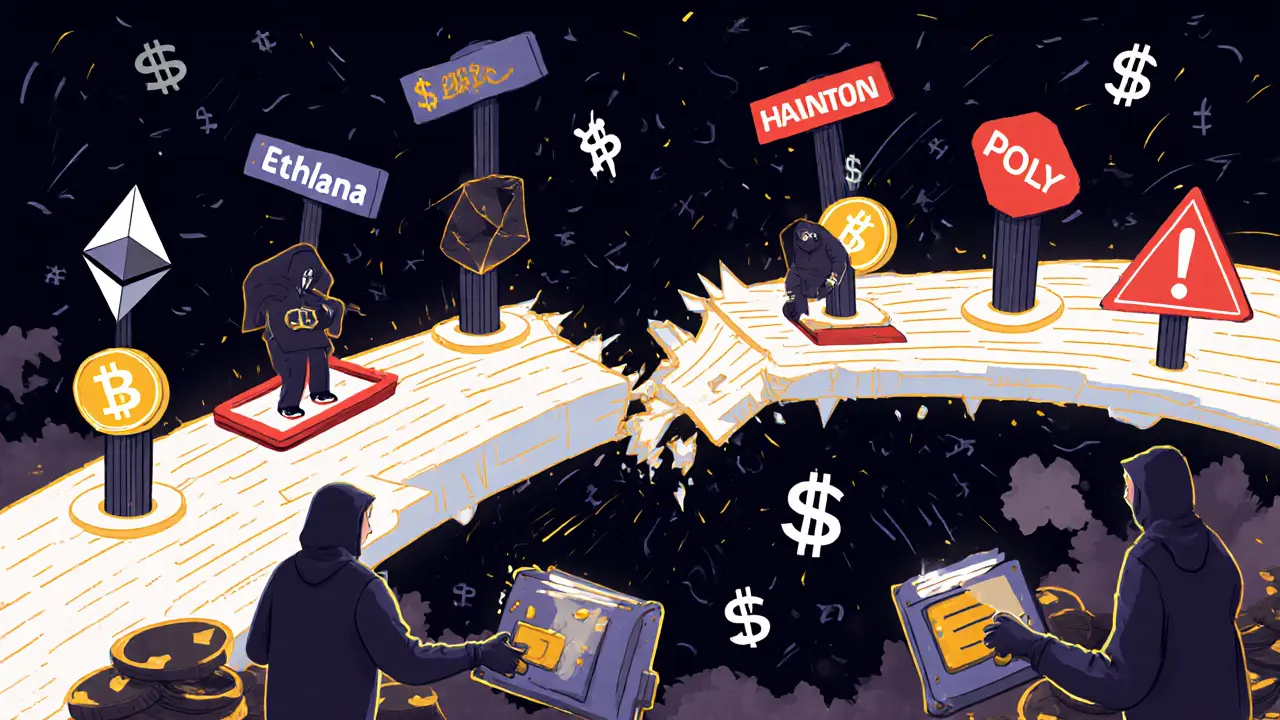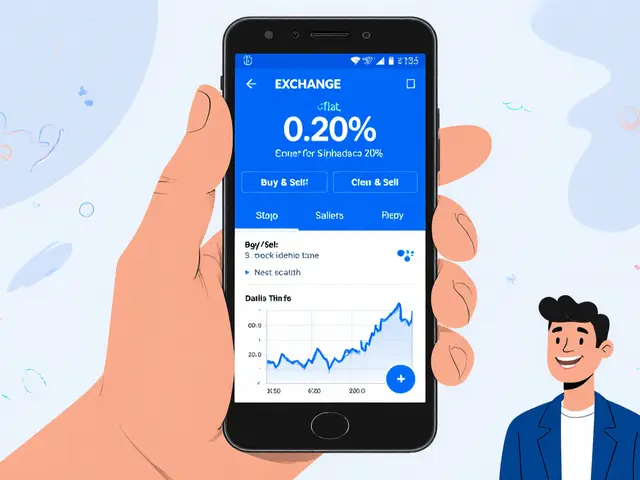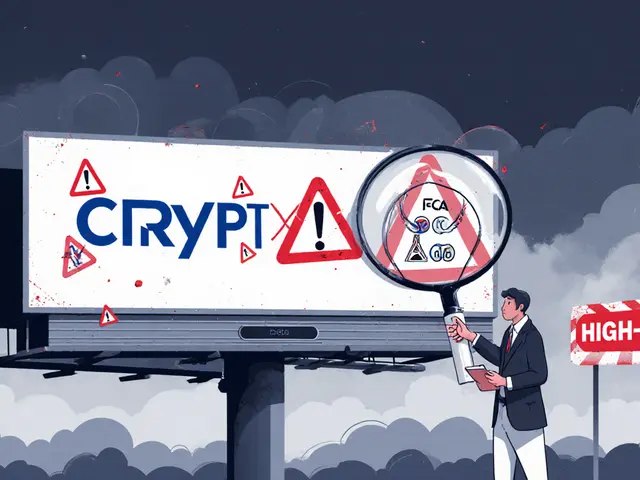Cross-Chain Bridge Risk Calculator
This calculator estimates the security risk of your cross-chain transfer based on real-world data from bridge exploits. The tool uses data from the 2025 CoinLaw report and Stanford University analysis.
Imagine sending Bitcoin to a DeFi app on Ethereum - but the two blockchains don’t talk to each other. That’s the problem cross-chain technology was built to solve. Today, you can move assets between chains like Ethereum, Solana, Polygon, and BSC using bridges and protocols. But behind the smooth user experience lies a messy, dangerous, and still-unresolved set of challenges. In 2025, over $19.5 billion is locked in cross-chain bridges, and $21.8 billion in illicit crypto has been laundered through them. The technology works - but it’s fragile, hard to regulate, and often insecure.
Security Risks Are the Biggest Threat
Cross-chain bridges are the most targeted part of the entire blockchain ecosystem. Hackers don’t attack wallets or smart contracts - they go for the bridges. Why? Because they’re the choke points where value flows between chains. In 2022 alone, Wormhole lost $320 million in a single exploit. The bZx attack in 2021 moved $55 million across four different chains to hide the trail. These aren’t rare events. Dr. Wei Wang of Stanford University analyzed 37 major bridge exploits between 2020 and 2024. His conclusion? Bridges are the weakest link. Most bridges fall into two categories: trusted and trustless. Trusted bridges, like those run by centralized exchanges, rely on a small group of operators to verify transactions. They’re faster and easier to use, but if one operator gets compromised, the whole system collapses. Trustless bridges use cryptographic methods like Hashed TimeLock Contracts (HTLCs) to remove middlemen. But they’re complex, prone to bugs, and often fail under pressure. The 2025 CoinLaw report found that 50% of interoperability protocols struggle with scalability during high traffic, causing delays and failed transactions.Regulatory Chaos Is Making Compliance Impossible
Blockchain was supposed to be anonymous. But now, regulators are catching up - and cross-chain tech is making their job harder. When money moves from Ethereum to Solana to Arbitrum, it disappears from traditional tracking tools. Elliptic’s 2025 report says investigators lose the trail in 78% of cross-chain laundering cases. Merkle Science confirmed that legacy blockchain analytics tools are designed for single chains. Once funds cross over, they become invisible. This creates a legal nightmare. The EU’s MiCA 2.0 framework, expected in Q3 2025, will require cross-chain transaction monitoring. But most protocols aren’t built for that. KYC-Chain found that compliance systems still rely on blacklists - simple lists of bad addresses. That doesn’t work when criminals use 10 different chains to shuffle funds. David Carlisle of KYC-Chain says compliance now needs behavioral analysis - tracking how money moves, not just where it comes from. But few companies have the tech or resources to do this.
Fragmentation Is Killing User Experience
Users think cross-chain is simple. It’s not. Reddit user BlockchainNewbie42 spent 47 minutes and $28.73 in gas fees to move $150 from Ethereum to Polygon. Three attempts failed before it worked. That’s not an outlier. CoinLaw’s 2025 data shows 35% of users report serious difficulties using cross-chain interfaces. Trustpilot reviews for major bridge services average just 2.8 out of 5 stars. The top complaints? Unexpected failures (63%) and no customer support when things go wrong (58%). Even worse, only 25% of bridges support stablecoins like USDC or USDT - the most commonly moved assets. That means users are forced into expensive, unreliable workarounds. And there’s no standard. Each bridge uses different rules, fees, and confirmation times. You can’t predict how long a transfer will take or how much it will cost. For enterprises, this is a dealbreaker. Gartner’s 2025 survey found that 70% of companies cite unclear regulations as the main barrier to adoption. The rest say they lack the technical team to handle key management across chains or to confirm finality across different blockchains.Enterprise Adoption Is Stuck in Neutral
Big companies want cross-chain capabilities. They need to move assets between private and public chains. But they’re not doing it. Only 18% of Fortune 500 companies have implemented cross-chain solutions. Why? Because the tech is too risky, too complex, and too unregulated. Implementation takes 3 to 6 months, according to Block3 Finance. Most teams struggle with key management - keeping private keys secure across multiple chains. Transaction finality is another headache. Ethereum confirms in 15 seconds. Solana in 0.4 seconds. Some sidechains take minutes. How do you know when a transfer is really done? There’s no universal answer. Documentation is uneven too. Wormhole’s GitHub docs got a 3.2/5 rating from 87 reviewers. Axelar’s? 4.5/5 from 112. That gap matters. Smaller businesses can’t afford to hire blockchain experts just to integrate a bridge. The learning curve is steep. BVNK’s guide says users need to understand digital wallets, cryptographic keys, and gas fees - and most people don’t. Without better tools and clearer guidance, adoption will stay limited to big players with deep pockets.












People Comments
Man, I’ve used like five different bridges in the last year and half of them just vanished into thin air. One time I sent USDC from Ethereum to Polygon and it showed up as ‘pending’ for 14 hours. No error, no refund, just… gone. And when I reached out? Crickets. It’s wild how the tech looks slick on the frontend but the backend is basically a Rube Goldberg machine made of duct tape and hope.
For real, if you’re new to this stuff, don’t stress. Start with Axelar or Chainlink CCIP-they’re way more stable. I helped my mom move crypto last week and she didn’t cry once. That’s a win. Also, always check the bridge’s GitHub activity. If the last commit was six months ago? Run. 🚩
Oh please. You’re all acting like this is the first time tech has been messy. Remember when the internet had dial-up? Or when smartphones couldn’t even send GIFs without crashing? Cross-chain is in its awkward teen phase. It’s loud, it’s unpredictable, and yes-sometimes it steals your cash. But it’s evolving. The regulators are waking up, the protocols are learning, and the users? They’re getting smarter. This isn’t collapse-it’s growing pains.
The structural fragility of these bridges is not merely a technical shortcoming-it is a profound epistemological failure of decentralized governance. The reliance on ad hoc cryptographic primitives, devoid of formal verification, constitutes a sociotechnical abyss wherein trust is algorithmically outsourced to entities with neither accountability nor incentive alignment. One must ask: Is interoperability worth the ontological risk? The $21.8 billion laundered through these channels is not merely illicit capital-it is the necrotic tissue of a system that mistook speed for sovereignty.
You guys are overthinking this. All these bridges are garbage. Only Axelar and CCIP are even worth looking at. Everyone else is just a rugpull waiting to happen. If you’re using anything else, you deserve to lose your money.